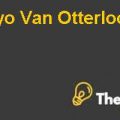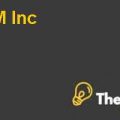
Four Strategies for the Age of Smart Services
1- A brief description of each of the four strategies.
Four basic strategies have been defined to attract customers towards a product, which are discussed as under.
- The Embedded Innovator: - In this model customer will perceive the physical product as a primary source of value they can get from it and expect to receive the support services continuously as they have received in the past i.e. maintenance contracts, warranties, installation, etc.… Most of the companies provide a number of such services with their products without any additional charges in order to increase their sales.
- The Solutionist: - In this model the basic value is still associated with the primary product but the company can earn additional value and brand recognition in terms of increase in sales through a number of associated activities i.e. in the life cycle of an MRI Scanner there are a number of activities ranging from financing and determining the appropriate scanner to up-gradation of its hardware.
- The Aggregator: - In this model the business opportunity depends upon the performance or outcomes of a number of products that works in collaboration with one another. For example the remote control table lamp with a burning bulb or a remote control television, etc.…
- The Synergist: - According to this model, for capturing an opportunity it is not necessary for the company to develop a product or make a collaborative effort to work with an already existing product but it can also succeed by simply providing certain types of intelligent devices that can play well with others.
- 2. At least one strength and one weakness of each strategy.
|
Strategy |
Strength |
Weaknesses |
|
The Embedded Innovator |
This will give an opportunity to the company to target price-conscious customers. |
This will increase the operating and production cost of the company, which will affect its profitability. |
|
The Solutionist |
It will provide an opportunity for the company to become a market leader and a single supplier of a product in the market. |
It will require huge capital investments because the company will be required to run multiple businesses at a single time. |
|
The Aggregator |
It will reduce the production cost of the company and let it to focus upon a specific group of products. |
It will increase the inter-dependency of a product over another, which will reduce its market compatibility. |
|
The Synergist |
Requires low capital investment and setup cost. |
Requires high level of professional competence and a well-established R&D facility. |
- 3. An example of a company employing each of the strategies and why you chose this company?
I will take the example of Apple Inc. because it can effectively employ all of these strategies in their business model. By employing the embedded innovator strategy, the company offer value added services i.e. warranties, free repair within the term of warranty, etc.… to its customers along with its products. It also provides additional value in the form of applications that can be downloaded from its apple store, which we can term as the Solutionist model of their business strategy. The company also has collaborations with the mobile phone services providers i.e. Verizon, etc… which highlights the aggregator model of its business strategy. However, the products developed by Apple can also be used as intelligent devices with PC as Camera, Music player, etc… that highlights its Synergist Model................
This is just a sample partial case solution. Please place the order on the website to order your own originally done case solution.













